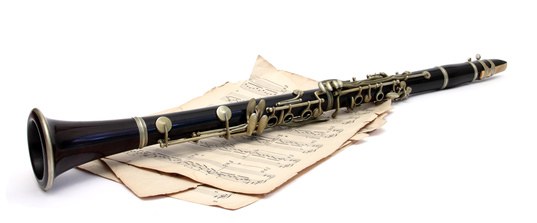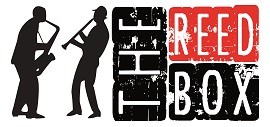History of the clarinet
Published : 2015-02-10 11:22:17
Categories :

The clarinet is the wind instrument that can best generate, swell, decrease and lose sound.
From there, the precious ability to produce the distant, the echo, the echo of the echo, the twilight sound. What more admirable example could I give of the application of some of these nuances than the dreamy clarinet phrase accompanied by a tremolo of string instruments in the middle of the Allegro of the Freischütz overture!.... "Hector Berlioz
Around 1690, J.C. Denner (1655-1707), instrument maker in Nuremberg
spends many years improving the old French torch. He replaced the box closing the reed with a mouthpiece, and invented the two-key clarinet with a conical bell. This 50 cm high instrument, whose sound was reminiscent of the high trumpet, is called the clarino. First in boxwood, then in grenadilla, then in ebony, three sound registers stand out in the clarinet: the torch (bass), the medium and the bugle (treble). Around 1747, Johann Melchior Molter dedicated four concertos to him. The musicians of the Mannheim school, Keiser, Telemann, adopted him, as well as in France Rameau, who used him in his operas Zoroastre, Acanthe and Céphise, or Gluck in Alceste.
 The makers, at the service of the composers, improved the instrument by lengthening it and adding keys. In 1791, Xavier Lefèvre added a 6th key to it, the year of Mozart's undeniable masterpiece, the Concerto in A Major (K.622). He also composed the Quintet in A (two violins, viola, cello, K.581), and the Trio in E flat (viola, piano, K.498). Weber created a concertino, two concertos, and a quintet, great classics from the repertoire, such as Louis Spohr's four concertos, or Stamitz's, Krommer's... In 1812 Müller introduced his 13-key clarinet, revolutionary for ease of playing.Then it was Klosé who in 1844 had the idea of adding a barrel to the body of his left hand, and of adapting the system of movable rings that Boehm had placed on the flute.
The makers, at the service of the composers, improved the instrument by lengthening it and adding keys. In 1791, Xavier Lefèvre added a 6th key to it, the year of Mozart's undeniable masterpiece, the Concerto in A Major (K.622). He also composed the Quintet in A (two violins, viola, cello, K.581), and the Trio in E flat (viola, piano, K.498). Weber created a concertino, two concertos, and a quintet, great classics from the repertoire, such as Louis Spohr's four concertos, or Stamitz's, Krommer's... In 1812 Müller introduced his 13-key clarinet, revolutionary for ease of playing.Then it was Klosé who in 1844 had the idea of adding a barrel to the body of his left hand, and of adapting the system of movable rings that Boehm had placed on the flute.
In fact, since Beethoven, "there are few symphonies or dramatic works where she does not play solo" (G. Gourdet). The clarinet is used in Liszt's Piano Concerto in Flat, Berlioz's Symphonie Fantastique, Ravel's works, etc.In chamber music, she plays in many ensembles: various duets with Beethoven bassoon, two Brahms Sonatas, three Fantasiestücke for clarinet and piano by Schumann, four Pieces for clarinet and piano by Berg, the Récit et impromptu for clarinet and piano by Henri Dutilleux, trios with basset horn and piano by Mendelssohn. We can also mention Debussy's Rhapsody for Clarinet and Orchestra, Roussel's Divertissement, Op. 6, with flute, oboe, clarinet, bassoon, horn and piano, Poulenc's Sonata, Stravinsky's three pieces..

The cat with the velvet legs of "Pierre et le Loup"
becomes voluble and imaginative under the fingers of Benny Goodmann or other jazzmen such as Sidney Bechet, Barney Bigard, Woody Herman... Schoenberg even uses the Flatterzunge (rolling tongue to make a tremolo effect) on the bass clarinet in his Pierrot lunaire.The 20th century attributed many pages to the clarinet, such as those of Messiaen (Quartet for the End of Time), as well as Dusapin, Donatoni, Jarrel, Boulez, etc.., and many composers today continue to honour this instrument with its varied possibilities and characters!
Description of the clarinet
This instrument has 5 parts:
- The mouthpiece generally in ebonite, or sometimes in crystal, which constitutes a conical resonance chamber, and is composed of a table (flat part where the reed), a chamber, a trapeze, and a pin that fits on the cylinder. The opening gives a more or less open or closed spout, i.e. more or less loud to play.
- The barrel, of different sizes (64 to 67 mm), is used partly to tune the instrument,
- The left body, called the upper body, has 15 holes, 9 keys, including the 12th on the left thumb, and 3 rings,
- The straight body, called the lower body, where the right thumb supports the instrument, with 9 holes, 8 keys and 3 rings.
- And finally the conical bell, which also has a great impact on the roundness of the sound.
